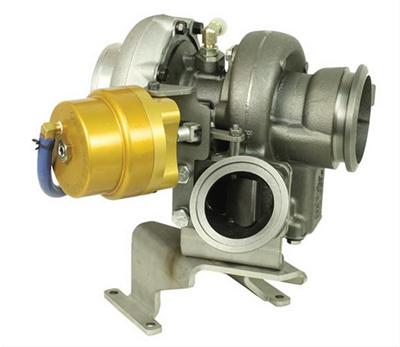Turbocharging is a great way to increase horsepower if it is done properly. Bigger isn’t always better and severe engine damage may occur if not done correctly. I am going to give you some basic advice that could save you time,money,and heartache.
It is not rocket science but it does take some planning to build or upgrade a turbocharged engine. Displacement (engine size) and engine internals (pistons,crankshaft,connecting rods,studs,and bolts) must be considered when building a reliable boosted motor. Here is a pretty good calculator for sizing a turbo for horsepower expectations http://www.squirrelpf.com/turbocalc/
Fuel and air delivery are also an issue you will have to plan for. Do the injectors or carburetor need to be sized larger to meet demands and horsepower goals? What air intake is used as well as intake routing can affect performance gains as well. Consider upgrading to a cold air intake system with an inter-cooler to maintain consistent air intake temperatures. This reduces power loss due to heat build-up or external air temperature.
Your ignition system will definitely have to be reprogrammed,modified,or upgraded as well. Spark plugs,wires,coil packs ( or single ignition coil), are a good investment no matter what your needs are. A better and stronger ignition system is a source of hidden gains and a necessity for boosted engines. I can tell you now that ignition timing will have to be retarded in most cases to prevent knocking or damage to the motor itself.
When using a stock motor with no internal upgrades,keep boost pressures low ( between 1.5 and about 8 lbs.). On a motor that already has a turbo, try reprogramming the stock computer,and a few more lbs. of boost can be had with a pop-off valve mod. Naturally if your power adder has higher pressures to start with, go with small increases to boost pressures. For higher pressures ( about 9 to 25 lbs.) a stud and bolt upgrade will be necessary to prevent stretching as well as breakage of retaining hardware. This is a big big cause of reliability issues and resulting failures. Broken rods, cracked pistons,and broken rings will result when not using upgraded internals as I mentioned before.
In short; plan ahead before you open your wallet to give your hard earned money away. Research on-line first. It is free ! Stick with big name manufacturer’s because they have reliable proven data to back up their products. By this I mean direct hands on knowledge,warranties, and instructions to back it up. It is a puzzle that must be matched and fitted together correctly. All your efforts will be rewarded with thousands of care free miles. And if you are like me, a few miles of tire smoke as well.
Keep on spooling !
Troy Lied


